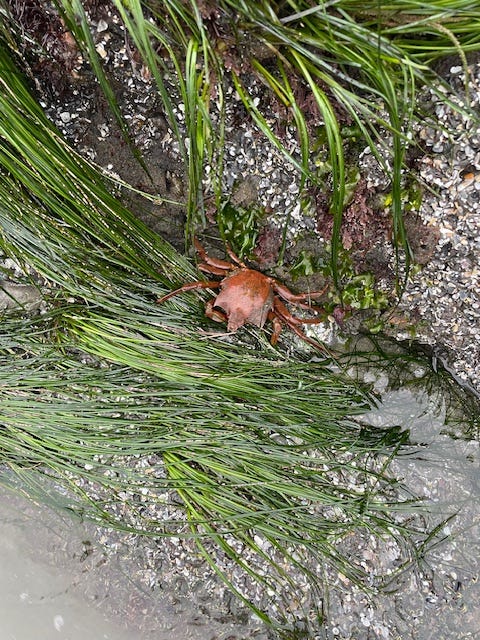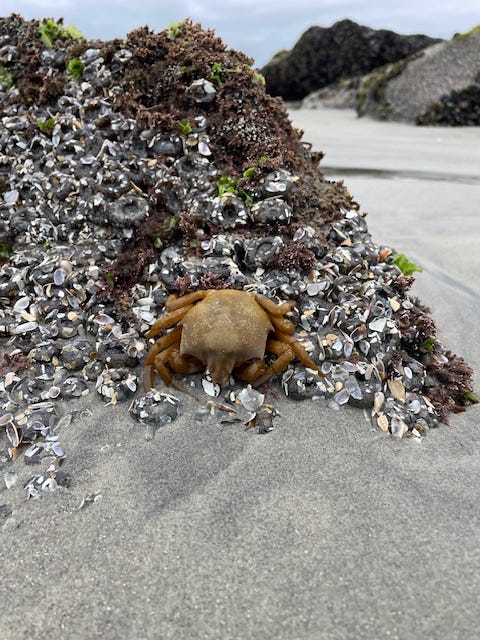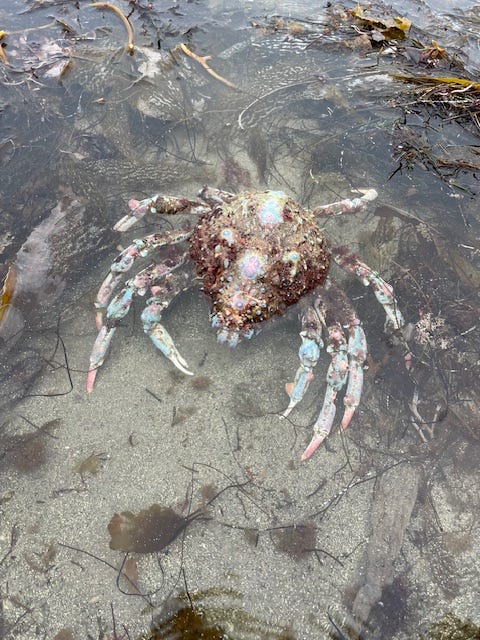A lot of varieties of crabs have been appearing along Coronado’s shores. Here are a few that @coronadobeachcomber encountered this past month.
Lined shore crabs blow bubbles when they are out of water, passing air over moist gills to absorb oxygen.
Lined shore crabs (Pachygrapsus crassipes)
Also known as striped shore crabs, they are very common and what you will most likely see at the tide pools. They are relatively small, with their carapace (hard outer shell) measuring up to 1¾ inch wide. They are adapted to being out of water and can be seen running over rocks and sand. These crustaceans feed primarily on algae, alternating between their left and right pincers to eat, giving the appearance that they are shoveling food into their mouths.

Mexican Fiddler crabs (Leptuca crenulata)
These small crabs grow up to three-quarters of an inch and can be identified by their eyes, which sit on stalks above their bodies. The male fiddler crab has one larger pincer to attract a mate and to intimidate other males. The smaller pincer is used for feeding on tiny organic matter found on the sandy sea bottom. Female fiddlers have pincers that are both the same size.


Shield-backed kelp crabs (Pugettia producta)
Kelp crabs blend in with the color of kelp, which is their main food source. Their carapace grows to be about 3½ inches wide and is shaped like a shield, hence the name. They migrate to shallower waters at the beginning of the year for about nine months. From the fall to December, kelp crabs feed and mate in deeper waters offshore.


Sheep crab (Loxorhynchus grandis)
Also known as the spider crab, this is the largest crab found on the California coast. Males can grow to 9½ inches across their carapace, and they have four sets of legs. The largest set of legs is longer than the carapace width, bringing the full size of these crabs to almost 2 feet across. Like the kelp crabs, they are migratory, spending the warmer months in shallower waters. While most crabs molt their shells as they grow and can regenerate limbs during a new molt, the sheep crab only molts until it reaches sexual maturity. Once the final molt occurs, it stops growing and can’t regenerate new limbs.
@coronadobeachcomber walks along the beach every day to take in the diversity of sea life on local beaches. All images provided by @coronadobeachcomber.




